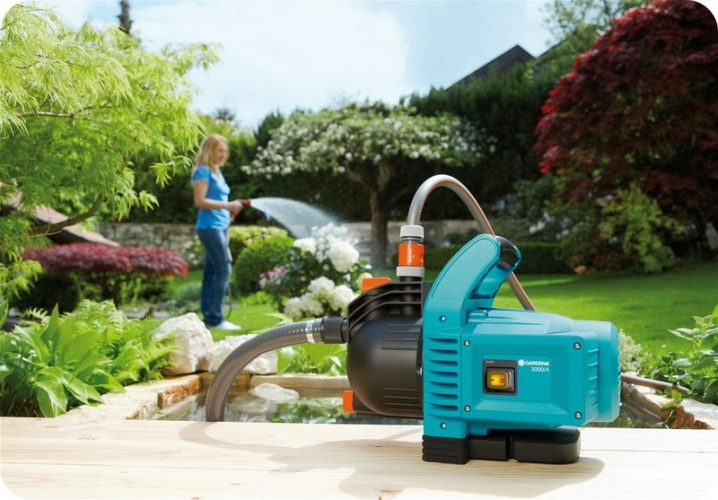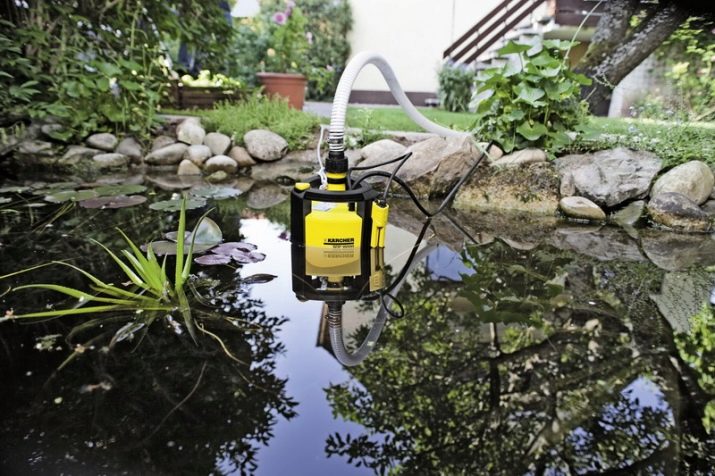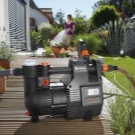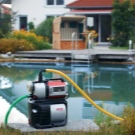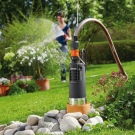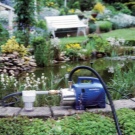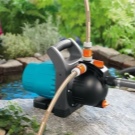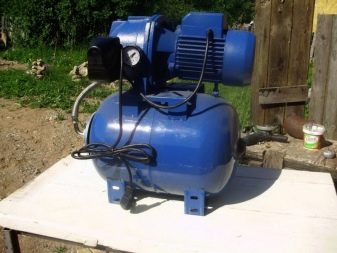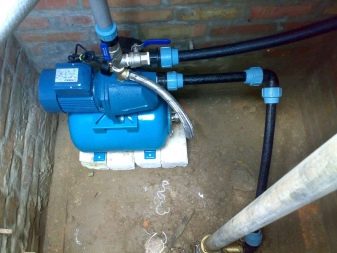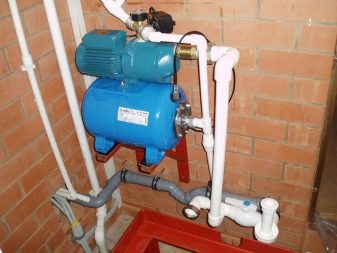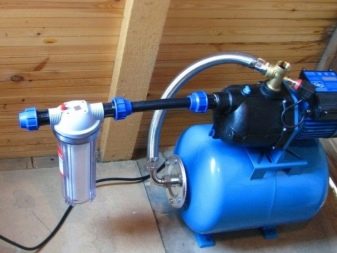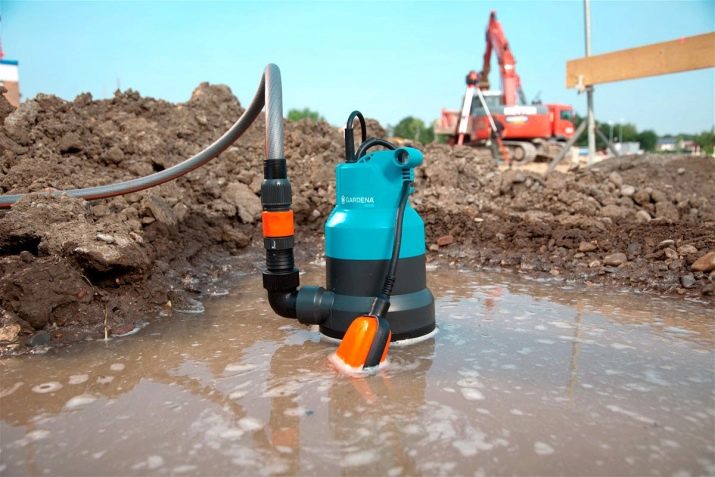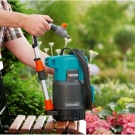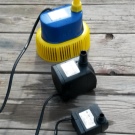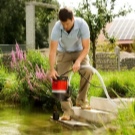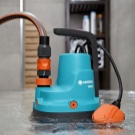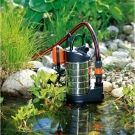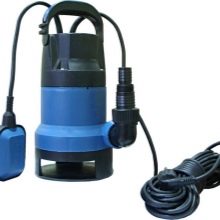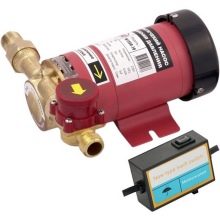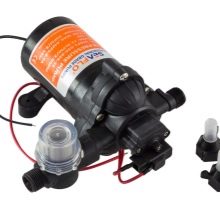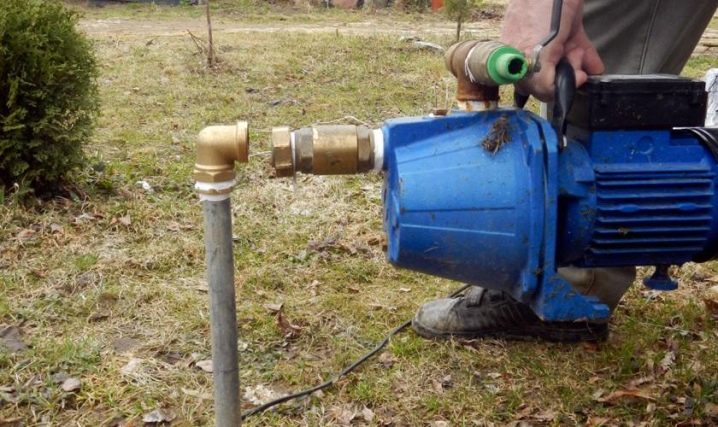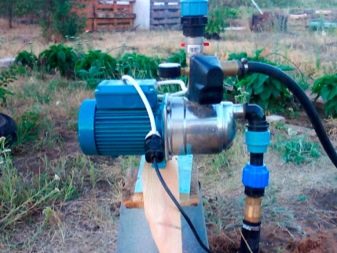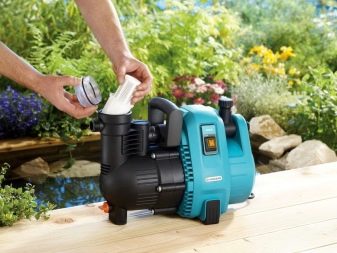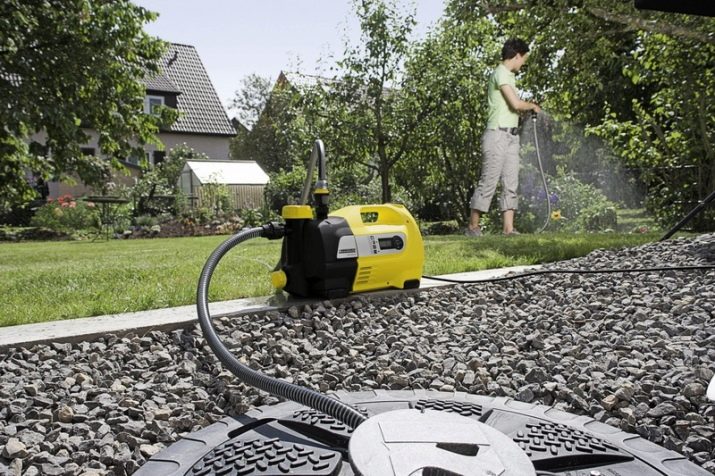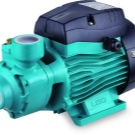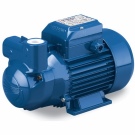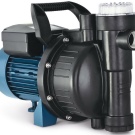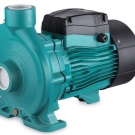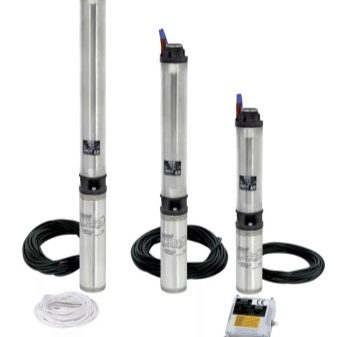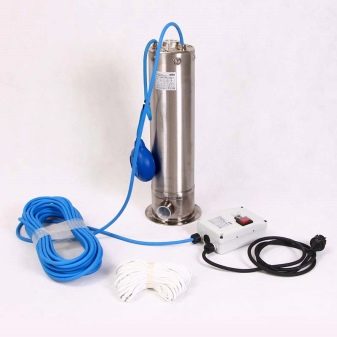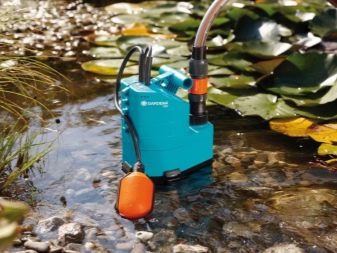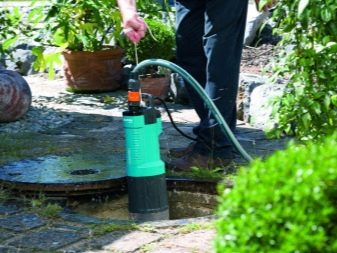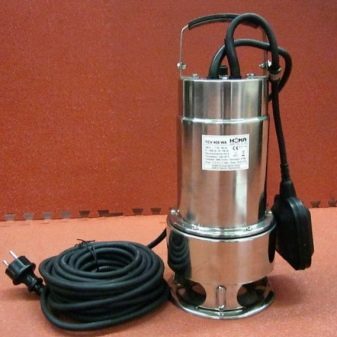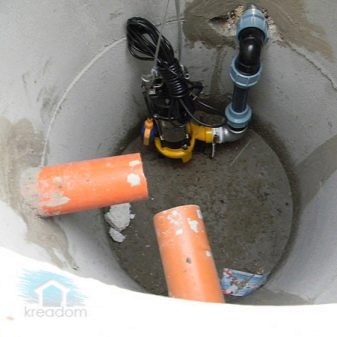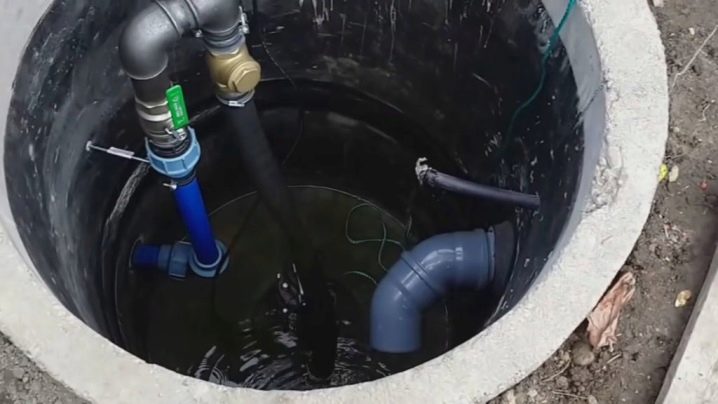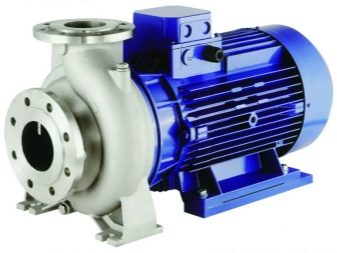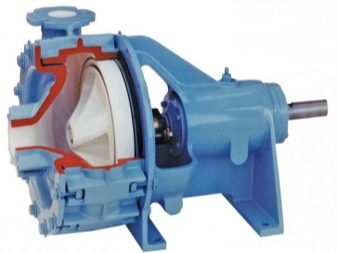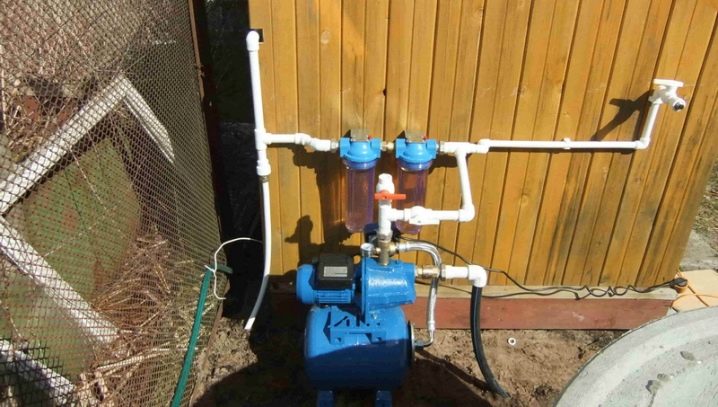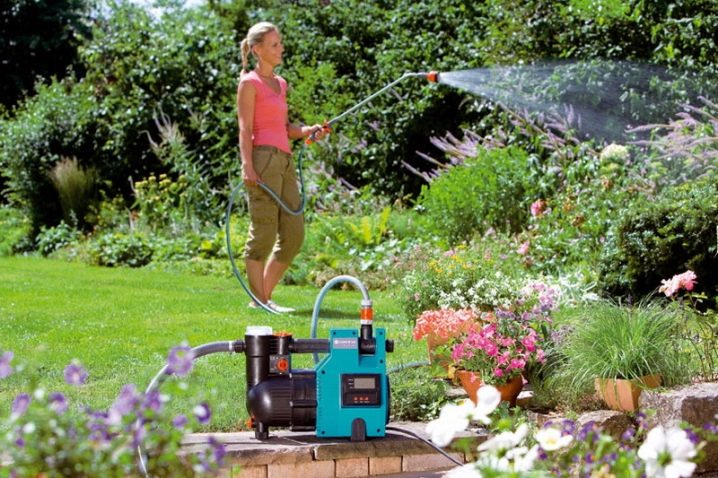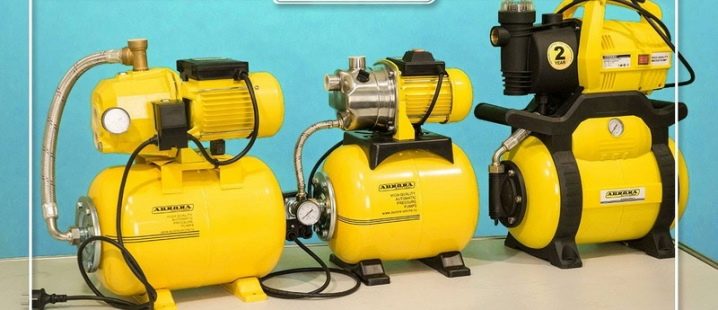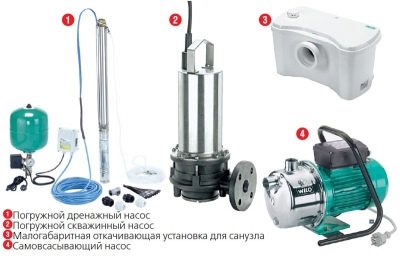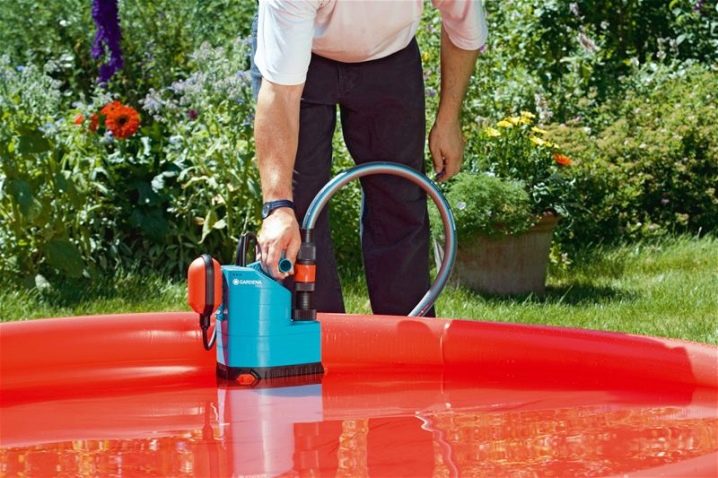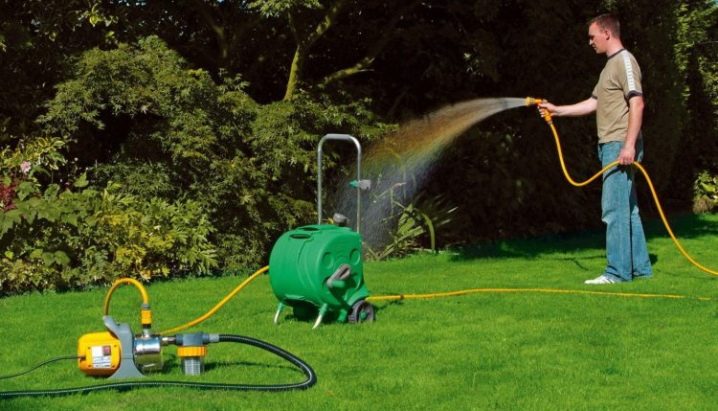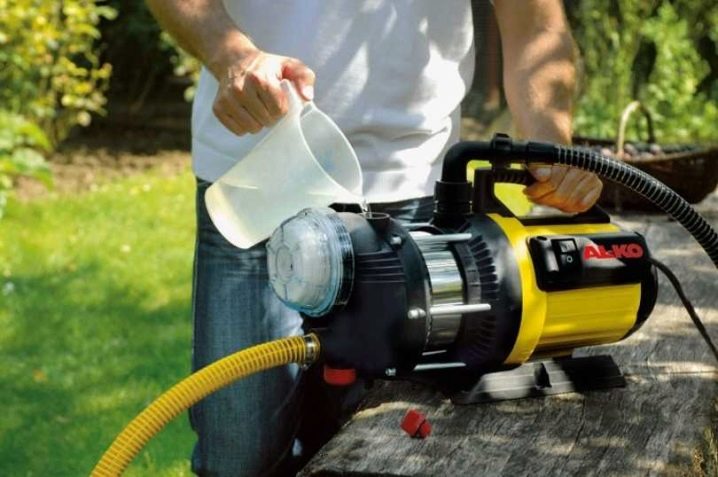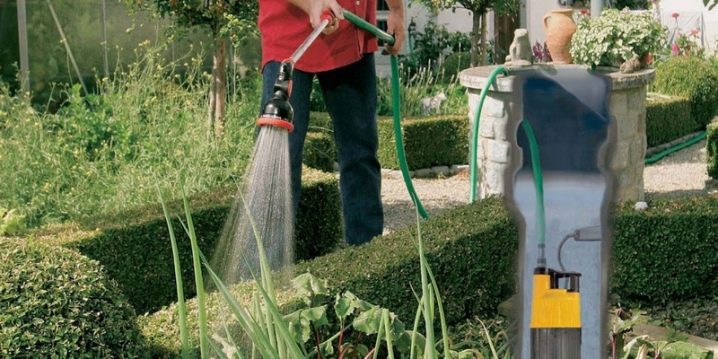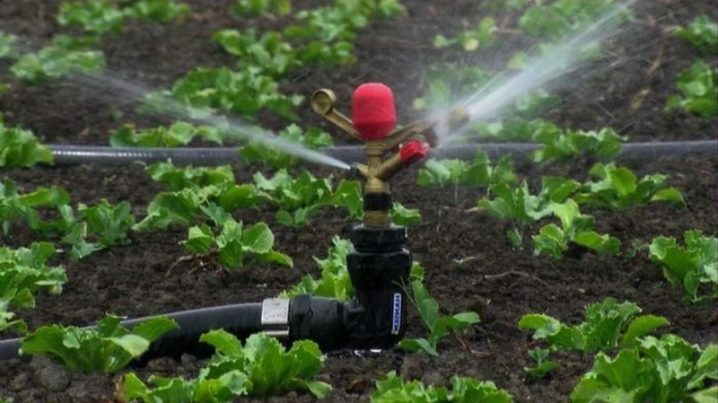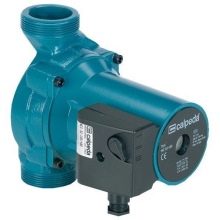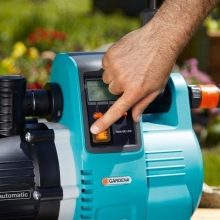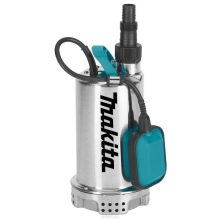Water pumps: a variety of models and designs
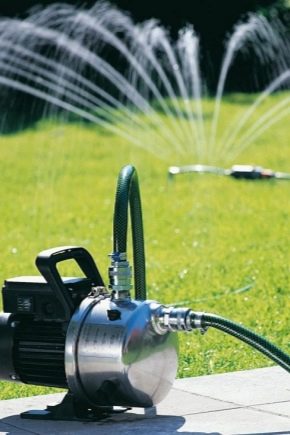
The water pump is a very important part of the system of domestic water supply and watering in the country and in country houses. The functionality of the entire system as a whole depends on its efficiency: if the device is chosen incorrectly, then its capacity will not be enough to perform all the tasks, therefore in this situation malfunctions are inevitable.
Special features
Every homeowner or owner of a dacha who has his own piece of land must have faced the unpleasant problem of lack of water. Disconnection can last only a few hours, and can stretch for several days, causing significant inconvenience.It is rather unpleasant when the water supply stops or the water pressure decreases significantly during the irrigation season, which is why many people decide to drill a well and install a separate water pump.
Pumps perform two basic functions such as:
- provide uninterrupted water supply cottages;
- remove all waste and sewer water outside the site.
There are many pumps:
- pump for well;
- for irrigation and irrigation;
- for the fountain;
- manufacturers also produce drainage and fecal devices.
Each model is distinguished by its dimensions, power parameters and technical features. Yes, and in the classification of water lifts is quite difficult to understand, without having a technical education. From a mechanical engineering position, a water pump is a device that represents a kind of hydraulic structure that is used to regularly pump water in horizontal and vertical directions.
To put the fluid in motion in the desired plane, the pump should be given the kinetic energy. Thus, it is possible to draw a simple conclusion that the water pump is an installation,which converts electrical energy into efficient and effective energy of moving water.
Kinds
In the shops today you can find a variety of types of pumps:
- vacuum and electric;
- booster;
- manual and automatic;
- membrane;
- mini station;
- console and flow versions.
Conventionally, all water pumps can be divided into designed for dirty and clean water. However, there are other, more detailed types of classification. Depending on their design, pumps are submersible and surface.
Surface pump
If a shallow well is equipped on a land plot, then lifting structures are used to effectively supply water to the top. Depending on the equipment modification, it can be installed near the water source or placed directly on the surface with the help of a float mechanism. Depending on the power of the model, the depth of its absorption varies from 5 to 9 m.
However, such structures can also be used to lift water to great heights. To this end, they must be supplemented with a special mechanism - an ejector, which is attached to the end of the suction hose and lowered into the water.
The technology of operation is such that during the suction part of the water that has been raised through the additional channel returns back to the ejector, due to this the inlet pressure increases significantly and the water is pushed from below. However, this design has one major drawback - as its efficiency deepens, the efficiency decreases, and energy consumption, on the contrary, increases.
Surface pumps are divided into such subspecies as:
- whirling - cause the pumping of water under the influence of high pressure;
- centrifugal - they are multi-and single-stage, are driven by the generated centrifugal force and are considered more efficient than vortex;
- self-priming - produce lifting and pumping water along with air masses;
- portable - their principle of operation is similar to self-priming pumps, such installations, thanks to a special device, can remove air from the water;
- liquid ring - may additionally pump diesel fuel and other types of liquids.
Submersible pumps
Such pumps are used to lift water from a depth, while it does not matter whether it is big or not. Depending on the functionality, submersible pumps may have the following modifications:
- well wells - located on the surface of the water, equipped with a special float switch, which is designed to turn off the mechanism in cases where the water reaches a critically low level;
- borehole - able to supply water from fairly large depths, while the water often rises with admixtures of earth, silt and gravel.
Separately it is necessary to dwell on two types of submersible pumps.
- Drainage options are used for pumping dirty water from a variety of objects: flooded basements, trenches, well under construction and pits. They are often used for drainage of pools, as well as overall containers of drums. However, it is also possible to pump water from an open reservoir with drainage pumps - you can water the garden and the vegetable garden only by dropping the pump into a nearby lake, river or garden.
- Fecal Pumps are used for sewage drains. They are necessary for pumping contaminated wastewater with a large number of mechanical particles in the liquid. As a rule, they are mounted on a sewage pumping station or mounted in a collecting well,where, with the help of a pump, the grinding of large particles takes place and the resulting flow is transferred to a special septic tank.
Thus, the main difference between a fecal pump and a drainage pump is the grinding mechanism, the powers of which allow to effectively grind not only fecal fibers, but also various hygiene items, towels, contraceptives and packages. The size of the inclusions is irrelevant, the only thing that the faecal pump cannot handle is the fact that it is hard stones, bricks and metals.
The grinder of such a pump is made of cast iron or stainless steel.
These materials determine their resistance to aggressive external environment. Such a mechanism in the country, where an autonomous sewage is equipped, is a truly indispensable thing, because it plunges directly into the collecting well and works in this submerged state. Such an installation is equipped with special floats, which give signals in case it is necessary to urgently stop the work on pumping drains.
Operating principle
The principle of the water pump depends on the design and the way in which electricity converts into kinetic energy. In this regard, the existing mechanisms of pumps can be classified depending on the device of the basic functional element, which affects the flow of water.
Bladed
Such mechanisms affect the pumped water using a special rotating wheel. In the built-in disks of the latter, small blades are installed, bending in the direction opposite to the direction of wheel movement. Thus, the torque from the motor shaft is transferred to the wheel shaft. The result of this rotation is the emergence of centrifugal force between the blades, the water begins to be displaced from the functional chamber and under high pressure into the pressure pipe.
Such a pump can be single- and multi-stage; in the first case, one rotary wheel is used, and in the second - a multitude of them.
Vibrating
Such designs have a functional reservoir, which is divided by a plastic membrane. On one side of the membrane is a cavity filled with liquid, on the other - a vibrator, which sets the thin membrane into motion. It bends the membrane in turn in both directions,and from the direction of this bending, the functional cavity volume either increases or decreases, which changes the pressure inside the cavity.
When the pressure decreases, some vacuum is formed inside the tank, which opens the inlet valve and water flows freely into the pump cavity from the inlet manifold. When the membrane is bent in the opposite direction, the pressure increases sharply and then the water begins to be intensively pushed into the water supply system through the valve.
Vibration pumps are much inferior to paddle pumps in terms of their efficiency, and they even fail more quickly. However, they are much cheaper, and repairs are not expensive.
Hand held
These models are certainly not suitable for autonomous water intake systems that operate continuously. Such devices are driven by certain physical efforts that a person must apply. Therefore, such a pump can only be used periodically, so it is suitable for dachas, where their owners come on weekends, and the cost of such options is rather low compared to more technological counterparts.
By the way, installing a hand pump will be a good solution to duplicate the functioning of the main system. Because of this, you will never be left without water even in the event of an emergency, and even if a fire burns, you can quickly create fire fighting opportunities.
Scope of application
If we talk about surface pumps, then from the very name it becomes obvious that it does not sink directly into the water, but is placed on its surface. For water intake, a special hose is used, immersed to a predetermined depth directly into the water source.
Taking into account that the parameter of water rise is relatively low, such a mechanism cannot be used for wells, but for shallow wells and shallow springs, this method can be considered the best.
To make the pump more efficient, it is often equipped with accumulation tanks and a special system of operational pressure control. These designs are called "pumping station".
The scope of the water lifter is wide, the following should be highlighted among the common uses:
- provision of autonomous water supply;
- effective irrigation of the garden;
- drainage of flooded basement areas, pits and old wells;
- optimization of central water supply operation by increasing internal pressure.
How to choose?
Before you buy a surface or submersible water lift for a dacha or a private residential building, you need to correctly calculate the required indicators of operating parameters.
- Performance - this is the basic volume of fluid that the installation can pump per unit of time. This parameter is measured in cubic meters per hour or liters per minute. This is very important because the performance should not only be sufficient to fully ensure all major water intake points, but at the same time not excessive, because otherwise there is a risk of water hammering, which leads to periodic shutdown of the installation.
- Basic pressure features - this characteristic should provide not only the direct rise of water to the desired height, but also its movement in the horizontal plane.
- Permissible impurity concentration - this parameter is calculated based on the total volume of water. In the most difficult cases, you should use a pump for dirty water, but for liquids with admixtures of fecal particles it is worthwhile to dwell on the version of pumps with a metal grinder.
- Property to pump water elevated temperatures - this is of fundamental importance for those models of installations that work in the heating system, as well as for sewage systems in homes where there is a hot drain from a washing machine, taps and dishwashers.
- Dimensions and weight The pump must fully comply with the parameters of the installation site.
- Price It is also important for many users, while cheaper models have lower performance indicators, so they can be used with rare water intakes and small volumes of fluid transfer.
If we are talking about buying a drainage pump, then it is very important to analyze the degree of contamination of water that will have to be pumped out to them. Depending on this, there are such pumps as:
- with multichannel wheel - it is intended for processing water with a degree of impurities of no more than 1 cm.If you pump them more polluted water, then such a device will quickly fail. It is optimal for driving water from flooded basements, for draining pools, as well as for drawing water from an open source with the purpose of watering the garden and vegetable garden;
- with single-channel wheel - such a device pumps water with a more pronounced degree of pollution, as well as with admixtures of fecal particles;
- with an open wheel - such a device can pump water with impurities of 5–7 cm in size, for example, leaves, sand and various household garbage. This option is optimal if you have to take water from the pits and trenches in which the water contains a lot of clay impurities.
It is worth giving an example of calculating the basic parameters of the pump, which will ensure the effective operation of the device in specific conditions of use. It is believed that the pump is chosen correctly if its power is enough to perform all the functions assigned to it. Evaluation of the device is carried out according to two main criteria - the volume of the pumped liquid per unit of time and the height to which the pump can raise this liquid. Each object requires its own individual calculation, however, the principle can be demonstrated by example.
Pump performance
In order to roughly calculate the required capacity of the installation, first you need to determine the amount of water consumption. For example, in the conditions of a private house, it is spent on household and household needs, as well as on watering the flowerbeds, garden and vegetable garden on the adjacent plot.
According to the current SNiPs, one person consumes 200 liters of water per day, so it’s easy to calculate the total consumption of all family members permanently living in the house, for this you only need to multiply the number of people by 200. An additional parameter is the maximum consumption. It is largely determined by the simultaneous use of two or more points of water consumption.
Suppose if at the same time one person takes a shower (about 10 liters per minute), another uses a faucet in the kitchen (6 liters per minute), and the third turns on the trigger mechanism in the toilet (6 liters per minute), then the calculated figure maximum water consumption will be 22 liters per minute. As for irrigation, in accordance with the standards for irrigation 1 square. m of lawn or vegetable garden requires 4-6 liters of water per day, however,a more accurate indicator depends on weather conditions, the climatic region and water consumption characteristics of specific plants, because some varieties require up to 10 liters of moisture per day.
Water pressure
Choosing the minimum required water pressure, it is necessary to calculate two parameters such as:
- height, which will have to raise the water;
- the length of the horizontal pipeline, which will have to move it.
The height is calculated as the difference between the highest water supply point and the installation location of the unit. It should be borne in mind that for every 10 meters of the pipeline about 1 meter of pressure is lost. For example, let the submersible pump be fixed at a depth of 7 meters, the house is removed from the water intake at a distance of 20 meters, and the water needs to be lifted to the second floor, whose height is approximately 3 m. = 12 m.
Tips
To date, the market is filled with proposals from companies-manufacturers of water pumps. If you want the mechanism to work smoothly for a long time, you should give preference to products of popular brands.
One of the most common enterprises that have launched the production of water lifts is the Italian company Calpeda. This company is considered to be the absolute market leader in its segment, all products of which are distinguished by efficiency and reliability. Water pumps of this manufacturer are made on the most high-precision equipment for advanced technology. All materials and spare parts of pumps are made in Italy.
In addition to this brand, products are very popular with consumers. Gardena and Makitawhich are only increasing their potential, but nonetheless have already established themselves as stable and reliable manufacturers.
How to choose a water pump, see the following video.
